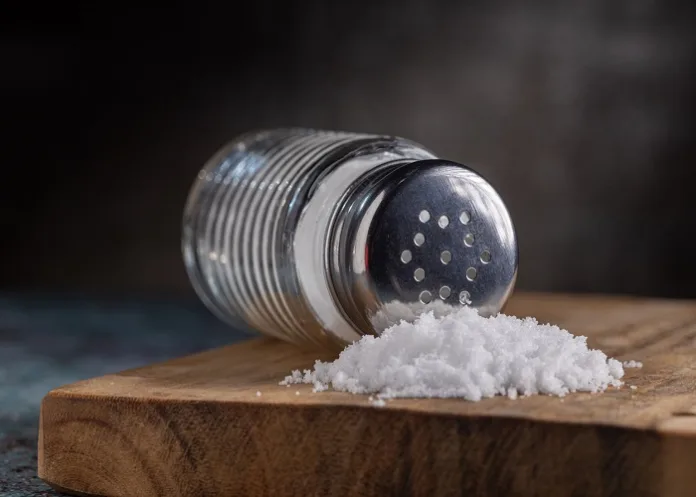Although there are plenty of good reasons to bypass the salt shaker – too much sodium increasing the risks of high blood pressure, heart disease and stroke – at the same time, table salt is probably the most reliable and plentiful source of iodine in most diets, say experts.
Manufacturers have been fortifying salt with the mineral since the 1920s, when iodine deficiency was widespread in the United States. But some people who don’t use much salt may still be depriving themselves of this important nutrient.
While iodine deficiency is uncommon today, certain people, including older adults, may be at risk, reports The Washington Post, with a 2017 study of 189 women aged 51 to 86 finding that 60% of them were moderately deficient.
What does iodine do for the body?
“Iodine is critical for the production of thyroid hormone,” said Marilyn Tan, a clinical associate professor of medicine at the Stanford University School of Medicine in California.
Thyroid hormone plays a role in weight, cognitive function, energy levels and even how well hair and nails grow. “It’s responsible for metabolism and can also affect other organs in the body,” Tan said.
Very low iodine levels can cause hypothyroidism, where the body makes too little thyroid hormone.
“Symptoms can include weight gain, fatigue, depressed mood, memory issues, constipation and intolerance to cold,” she added. Low iodine intake over a long period can also cause an enlarged thyroid gland (goitre).
Hypothyroidism is increasingly common with age.
Yet it sometimes goes undiagnosed in older people, in part because many of the symptoms are often written off as a natural part of ageing.
Why getting enough iodine is tricky
Iodine is found naturally in only a few foods. It’s in fruits and vegetables, seaweed and seafood if they come from iodine-rich soil or seawater. Dairy products and eggs are good sources if they come from animals given iodine-fortified feed. Packaged breads made with iodate dough conditioner also contain it.
But changes in the environment, farming practices and food processing are affecting the iodine content of all these foods, said Adrienne Hatch-McChesney, a research dietician in the Army’s Military Nutrition Division, so the iodine content can be inconsistent.
You might think that because many packaged foods contain sodium you’re getting plenty of iodine.
“But the salt used in processed foods typically isn’t iodised,” she said. “Also, fancier salts that are popular now, such as sea, Himalayan or kosher salts, are not good sources.”
What’s more, the iodine content of foods isn’t usually listed on the nutrition facts label, so it can be a challenge to know how much you’re getting.
The recommended daily allowance of iodine is 150 micrograms (mcg). You can get that amount in ½ teaspoon of iodised salt, but you’re also getting a whopping 1 165 milligrams of sodium. If you’re watching your sodium intake, that’s too much.
But it’s still worth using an iodised version anytime you do sprinkle salt on food or use it in cooking.
See more from MedicalBrief archives:
Sodium restriction in heart failure should be taken with a pinch of salt
Kinase inhibitor could be viable in thyroid cancer therapy — trial
Healthy diet not offsetting negative effects of high salt intake
Contentious study shows reduced salt consumption not necessary for cardiac health

